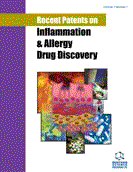Abstract
Topical application of honey to burn and wounds has been found to be effective in controlling infection and producing a clean granulating bed. It is suggested that the wound healing effect of honey may in part be related to the release of inflammatory cytokines from surrounding tissue cells, mainly monocytes and macrophages. It has been reported that honey hastens wound healing by accelerating wound contractions. Microscopic evaluation demonstrated that there was a significant acceleration of dermal repair in wound treated with honey. Macroscopic and microscopic observations under in vivo assessment suggested that the topical application of honey might have favourable influences on the various phases of burn and wound healing hence accelerating the healing process. The regulatory effects of honey are related to components other than the sugars. However, the mechanisms by which honey affects the release of anti inflammatory agents and growth factors from monocytic cells are as yet unclear. Whether honey affects other cell types, particularly endothelial cells and fibroblasts, involved in wound healing also needs to be clarified. The present article is a short review of recent patents on the healing effect of honey in wound and burn management.
Keywords: Honey, wound, burn, anti-inflammatory, cytokines, tissue cells, monocytes, macrophages, burn management, Inflammation, Granulation, Maturation, PDGF, DNAse, ROS, Nitric Oxide, H2O2, NADPH, mesenchynal cells, protein fibres, fibronectin, cell growth, epidermal cells, Remodelling Phase, MRJP1, IL-1, NF-B
 41
41


















